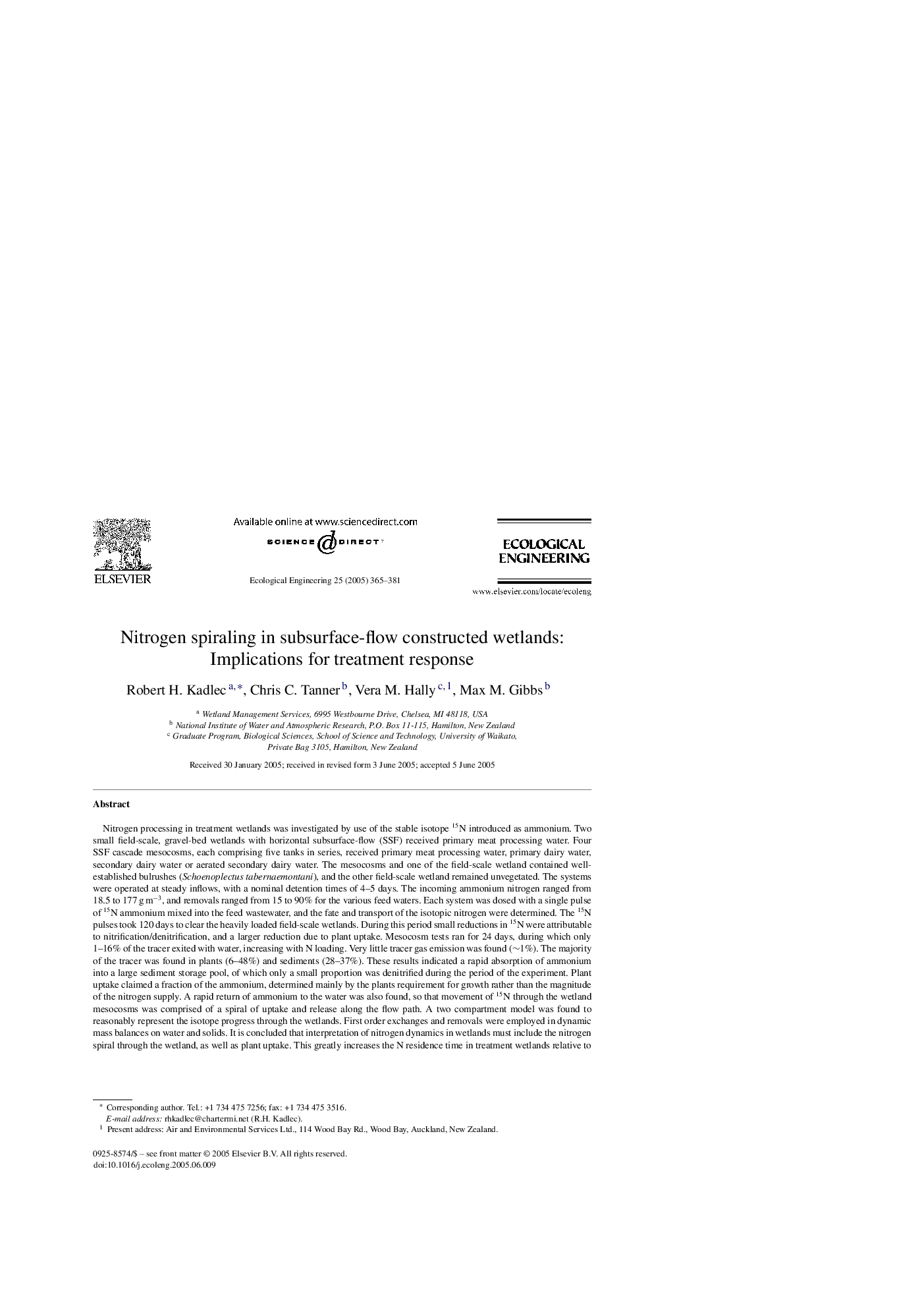| Article ID | Journal | Published Year | Pages | File Type |
|---|---|---|---|---|
| 9447562 | Ecological Engineering | 2005 | 17 Pages |
Abstract
Nitrogen processing in treatment wetlands was investigated by use of the stable isotope 15N introduced as ammonium. Two small field-scale, gravel-bed wetlands with horizontal subsurface-flow (SSF) received primary meat processing water. Four SSF cascade mesocosms, each comprising five tanks in series, received primary meat processing water, primary dairy water, secondary dairy water or aerated secondary dairy water. The mesocosms and one of the field-scale wetland contained well-established bulrushes (Schoenoplectus tabernaemontani), and the other field-scale wetland remained unvegetated. The systems were operated at steady inflows, with a nominal detention times of 4-5 days. The incoming ammonium nitrogen ranged from 18.5 to 177 g mâ3, and removals ranged from 15 to 90% for the various feed waters. Each system was dosed with a single pulse of 15N ammonium mixed into the feed wastewater, and the fate and transport of the isotopic nitrogen were determined. The 15N pulses took 120 days to clear the heavily loaded field-scale wetlands. During this period small reductions in 15N were attributable to nitrification/denitrification, and a larger reduction due to plant uptake. Mesocosm tests ran for 24 days, during which only 1-16% of the tracer exited with water, increasing with N loading. Very little tracer gas emission was found (â¼1%). The majority of the tracer was found in plants (6-48%) and sediments (28-37%). These results indicated a rapid absorption of ammonium into a large sediment storage pool, of which only a small proportion was denitrified during the period of the experiment. Plant uptake claimed a fraction of the ammonium, determined mainly by the plants requirement for growth rather than the magnitude of the nitrogen supply. A rapid return of ammonium to the water was also found, so that movement of 15N through the wetland mesocosms was comprised of a spiral of uptake and release along the flow path. A two compartment model was found to reasonably represent the isotope progress through the wetlands. First order exchanges and removals were employed in dynamic mass balances on water and solids. It is concluded that interpretation of nitrogen dynamics in wetlands must include the nitrogen spiral through the wetland, as well as plant uptake. This greatly increases the N residence time in treatment wetlands relative to the hydraulic detention time, resulting in long delays of treatment system response to changes in N loading and attenuation of short-term fluctuations in loading.
Keywords
Related Topics
Life Sciences
Agricultural and Biological Sciences
Ecology, Evolution, Behavior and Systematics
Authors
Robert H. Kadlec, Chris C. Tanner, Vera M. Hally, Max M. Gibbs,
